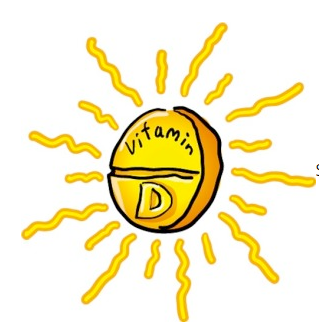Secret Question and Answer: Does it matter if my vitamin D levels are low?
Everybody now-a-days is worried about their Vitamin D levels. How come?
What is Vitamin D?

Vitamin D is a sterol, similar to a fat. LDL (a type of cholesterol) transports Vitamin D from the skin layer to the rest of the body. 25 Hydroxy cholecalciferol (inactive Vitamin D also known as protein bound Vitamin D) is converted to 1, 25 dihydroxy cholecalciferol (active or free Vitamin D) in the liver and kidneys. So, what does this really mean? What this really means is that if you are not discovering what is causing your Vitamin D levels to be low it really makes very little sense to take Vitamin D as a supplement or even to go out of your way to get proper sun exposure. “The Highest Good is to Find the Cause” according to Hyppocrates, the father of modern medicine. Wouldn’t it make sense to address the cause of low vitamin D levels rather than to just take Vitamin D forever?
Again, lets review:
Vitamin D is called a fat-soluble vitamin even though it is really a fat soluble hormone similar to cholesterol that is naturally present in very few foods because your body is able to synthesis it when your skin is exposed to sun. To repeat, it is also produced endogenously when ultraviolet rays from sunlight strike the skin and trigger vitamin D synthesis. Vitamin D that is obtained from sun exposure, food, and supplements is biologically inert and must undergo two hydroxylations in the body for activation. The first occurs in the liver and converts vitamin D to 25-hydroxyvitamin D [25(OH)D], also known as calcidiol. The second occurs primarily in the kidney and forms the physiologically active 1,25-dihydroxyvitamin D [1,25(OH)2D], also known as calcitriol or, as I call it, 1, 25 dihydroxy cholecalciferol.
Vitamin D is essential for promoting calcium absorption in the gut and maintaining adequate serum calcium and phosphate concentrations to enable normal mineralization of bone and prevent hypocalcemic tetany. It is also needed for bone growth and bone remodeling by osteoblasts and osteoclasts. Without sufficient vitamin D, bones can become thin, brittle, or misshapen. Vitamin D sufficiency prevents rickets in children and osteomalacia in adults. Together with calcium, vitamin D also helps protect older adults from osteoporosis. All these things are true. Yes, it is true. However, there are some important things that are being missed. For example, how do you use vitamin D properly in the clinical setting? In other words, when I have patients coming in to see me, how do I know who to give Vitamin D to and who not to give vitamin D to? This is a good question. Let’s ponder this in the next paragraph.
Vitamin D pulls calcium out of the large intestine and also out of bone and puts it into the blood. Therefore, hypercalcemia (excess calcium in the blood) can result from a patient having too much vitamin D. The result is muscle spasms and often times people will feel tired all of the time. The patient may feel constipated. Also, other mineral imbalances can result. (While sometimes this is actually a desirable effect in clinical practice, because this is a whole other subject we will not go into that here.) There is a ton of recent research and literature showing correlations between low vitamin D levels and immune system dysfunction diseases such as auto-immune diseases. This may be interesting…..but NONE of the research ever addresses why the Vitamin D levels are low. What is causing these patient’s vitamin D levels to be low. Let’s think about it for a minute. If the liver makes the first conversion of Vitamin D to 25-hydroxyvitamin D [25(OH)D] takes place in the liver and the second conversion of Vitamin D from 25-hydroxyvitamin D [25(OH)D] to physiologically active 1,25-dihydroxyvitamin D takes place in the kidneys, then wouldn’t Vitamin D levels have everything to do with kidney and liver function?! I have never had a patient that needed vitamin D or showed low vitamin D levels on a lab not have liver toxicity and/or kidney toxicity. Never. The CAUSE of low vitamin D levels is either lack of appropriate sunlight or dysfunctional Liver and Kidneys in 98% of cases. Sure, some people may have some type of genetic flaw or other rare condition, but these things are extremely rare.
I do use Vitamin D in practice but only rarely. Most of the time when I am using Vitamin D in my practice I am first addressing Liver and Kidney function before I ever prescribe Vitamin D. I know that some of the language that I am using may be a little bit challenging to follow if you do not have a science background, but get the main concepts. Vitamin D has major similarities to cholesterol and it is cholesterol itself that carries the vitamin D from the skin to other areas of the body. Cholesterol is metabolized by the Liver primarily (and also adrenal glands) and so Vitamin D levels and deficiencies are a direct result of both liver and kidney function.
Thank you so much for investing time in yourself and your future and your health by reading this article.


